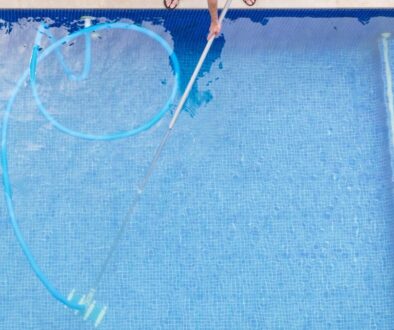5 Idea Generation Frameworks for Aspiring Entrepreneurs
Unlock your entrepreneurial potential with five innovative idea generation frameworks designed specifically for aspiring entrepreneurs.
This blog post explores five effective idea generation frameworks that can inspire and guide aspiring entrepreneurs toward creating innovative business concepts. In a rapidly changing market, having a structured approach to brainstorming and developing ideas can be the key to success. We will delve into various frameworks, their benefits, and practical applications to help you ignite your entrepreneurial journey.
IntroductionIn today’s competitive landscape, the ability to generate innovative ideas is crucial for aspiring entrepreneurs. Whether you’re looking to start a new business or expand an existing one, having a structured approach to idea generation can provide clarity and direction. This blog post will explore five idea generation frameworks that can help you tap into your creativity and uncover viable business opportunities. From design thinking to the SCAMPER technique, these frameworks are designed to facilitate brainstorming and propel your entrepreneurial journey forward.1. Design Thinking
Design thinking is a human-centered approach to problem-solving that encourages entrepreneurs to explore their customers’ needs before developing solutions. This framework comprises five stages: empathize, define, ideate, prototype, and test. – Empathize: Understanding the user’s experience is crucial in this initial stage. Entrepreneurs can conduct interviews, surveys, or observations to gather insights about their target audience’s needs and pain points.- Define: After empathizing, the next step is to define the problem clearly. This involves synthesizing the insights gathered to create a problem statement that focuses on the audience’s needs.- Ideate: This stage is all about brainstorming ideas. Entrepreneurs should generate a wide variety of ideas without judgment, encouraging creative thinking.- Prototype: Creating low-fidelity prototypes allows entrepreneurs to visualize their ideas and gather feedback without significant investment.- Test: Finally, testing the prototype with real users helps validate the solution and refine it further based on user feedback.Using design thinking not only enhances creativity but also ensures that ideas align closely with market demands. For instance, a startup focused on pool maintenance might use this framework to develop a new service that prioritizes customer convenience, ultimately leading to higher satisfaction and loyalty.
2. SCAMPER Technique
The SCAMPER technique is a creative brainstorming framework that encourages entrepreneurs to think differently about existing products or services. SCAMPER is an acronym that stands for Substitute, Combine, Adapt, Modify, Put to another use, Eliminate, and Reverse.- Substitute: Entrepreneurs can explore what elements of a product or service can be replaced with alternatives. For instance, what if a pool service used a different chemical for cleaning that’s more environmentally friendly?- Combine: This involves merging two or more ideas or products to create something new. An example could be combining a pool cleaning service with landscaping maintenance for a complete outdoor care package.- Adapt: Entrepreneurs can ask how they can adapt an existing idea to better meet customer needs. Perhaps a pool service could adapt mobile technology to allow clients to schedule cleanings through an app.- Modify: This is about changing aspects of a product to improve it. Modifying a pool maintenance schedule to offer flexible service times could appeal to busy homeowners.- Put to another use: Here, entrepreneurs consider how existing tools or services can be repurposed for new applications. For example, using pool maintenance equipment for other outdoor cleaning tasks.- Eliminate: Eliminating unnecessary elements can streamline offerings. A pool service might remove certain add-on services that aren’t popular to focus on their core offerings.- Reverse: This involves looking at processes in reverse to find new ideas. An entrepreneur could consider what would happen if they reversed their service delivery model, perhaps by offering a subscription service instead.Using the SCAMPER technique, entrepreneurs can breathe new life into their offerings, turning existing ideas into innovative solutions that stand out in a crowded market.
3. Business Model Canvas
The Business Model Canvas is a strategic management tool that helps entrepreneurs visually map out their business model on a single page. It consists of nine building blocks that define key components of a business:1. Customer Segments: Identifying the different groups of people or organizations that the business aims to reach.2. Value Propositions: What unique value does the business provide to its customers? This could be immediate income through pool routes or established customer bases.3. Channels: How will the business deliver its value propositions? This could include online platforms, direct sales, or partnerships.4. Customer Relationships: Defining the types of relationships a business will establish with its customers, such as personalized service or self-service options.5. Revenue Streams: Identifying how the business will earn revenue, whether through direct sales, subscription models, or service contracts.6. Key Resources: The most important assets required to make the business model work, such as skilled labor, technology, or customer data.7. Key Activities: Essential activities the business must perform to deliver its value proposition, including marketing, sales, and customer service.8. Key Partnerships: The external companies or entities that can help the business achieve its goals, like suppliers or service partners.9. Cost Structure: Understanding the costs involved in operating the business and how they relate to revenue.The Business Model Canvas allows aspiring entrepreneurs to visualize their concepts succinctly and make informed decisions. For example, a pool business broker could use this canvas to clarify how they provide value to their clients and identify strategic partnerships that enhance their service offerings, such as connections with financing institutions for easy pool route purchases.
4. Lean Startup Methodology
The Lean Startup methodology, developed by Eric Ries, is a framework that emphasizes rapid iteration and customer feedback in the product development process. This approach is particularly beneficial for entrepreneurs looking to minimize waste and maximize learning.- Build: Start with a minimal viable product (MVP) that contains just enough features to satisfy early customers and elicit feedback.- Measure: Collect data on how customers use the MVP. This could involve surveys, usage analytics, or direct feedback to understand what works and what doesn’t.- Learn: Based on the measurement, entrepreneurs can validate or invalidate their hypotheses about the product or service, leading to informed decisions about whether to pivot or persevere.- Pivot or Persevere: If the MVP shows promise, the business can continue refining and expanding the offering. If not, it’s time to pivot—a fundamental change to the product based on feedback.This methodology encourages entrepreneurs to think critically about their ideas and adapt them swiftly, reducing the risks associated with launching new products. For instance, if a pool maintenance startup discovers customers prefer an eco-friendly cleaning service over traditional methods through their MVP, they can pivot their services to reflect this demand and maintain a competitive edge.
5. Brainstorming and Mind Mapping
Brainstorming is a classic idea generation technique that encourages free thinking and creativity. Combined with mind mapping, it becomes a powerful tool for visualizing connections between ideas.- Brainstorming: Gather a group of people to generate ideas without criticism. This encourages all participants to share their thoughts and can lead to unexpected insights.- Mind Mapping: After brainstorming, use mind mapping to organize the ideas visually. Start with a central concept and branch out into related themes, helping to clarify relationships and explore various possibilities.This approach is particularly effective for smaller teams or individual entrepreneurs who may need to bounce ideas off one another. For example, a group of pool service professionals might collaborate to brainstorm innovative service packages that cater to different customer needs, such as seasonal maintenance plans or emergency cleaning services. By visualizing these ideas through mind mapping, they can identify the most promising concepts to develop further.ConclusionIn summary, generating innovative ideas is essential for aspiring entrepreneurs looking to carve their niche in the competitive business landscape. The five frameworks discussed—Design Thinking, SCAMPER, Business Model Canvas, Lean Startup Methodology, and Brainstorming with Mind Mapping—offer structured approaches to idea generation that can inspire creativity and drive success. By applying these frameworks, you can refine your business concepts, ensure they align with market needs, and ultimately create offerings that resonate with your target audience. As you embark on your entrepreneurial journey, consider which of these frameworks resonates most with your goals and objectives. Whether you’re interested in starting a pool service business, expanding existing services, or exploring new opportunities, having a structured approach to idea generation can lead you to the breakthrough concepts that will set you apart. Don’t hesitate to reach out to Tower Business Brokers to explore available pool routes for sale, where you can begin your journey towards successful entrepreneurship today.



